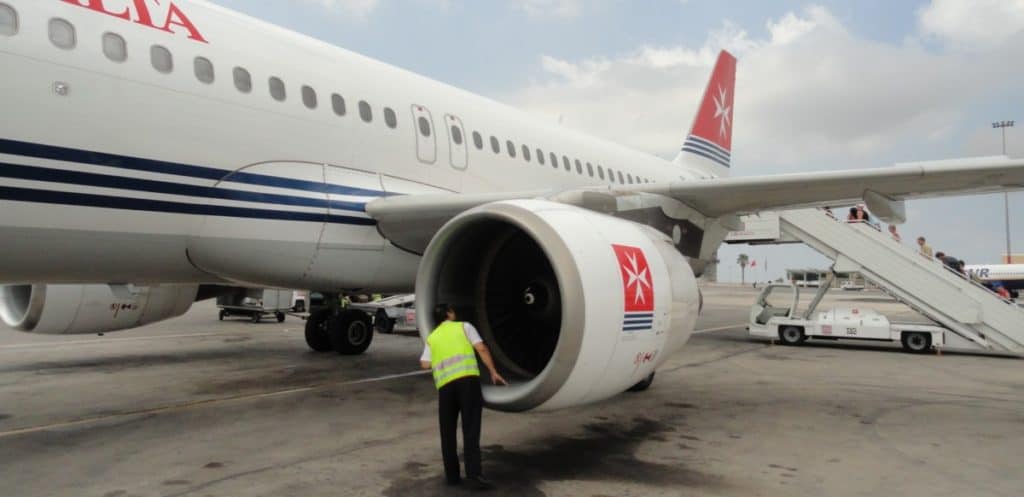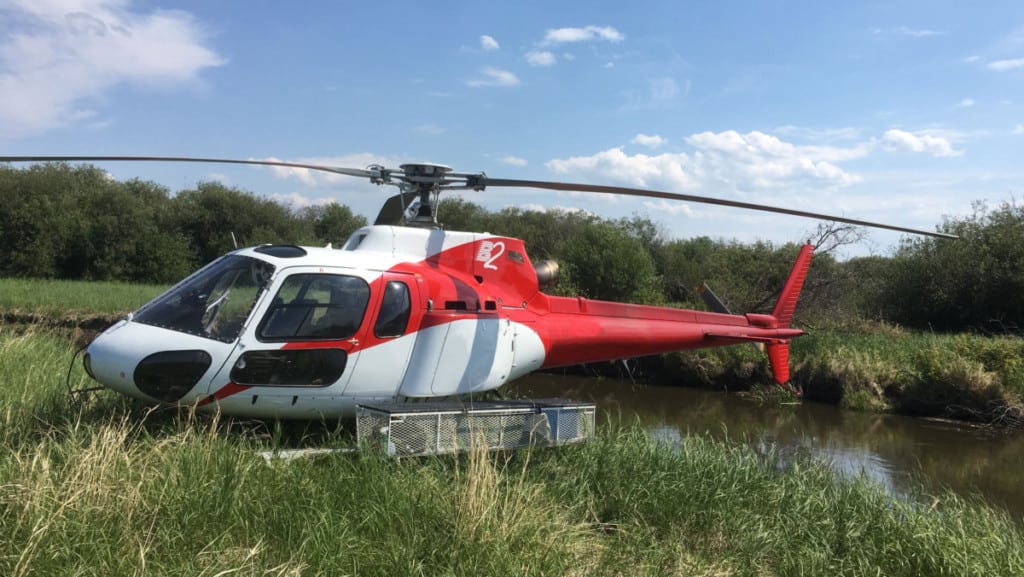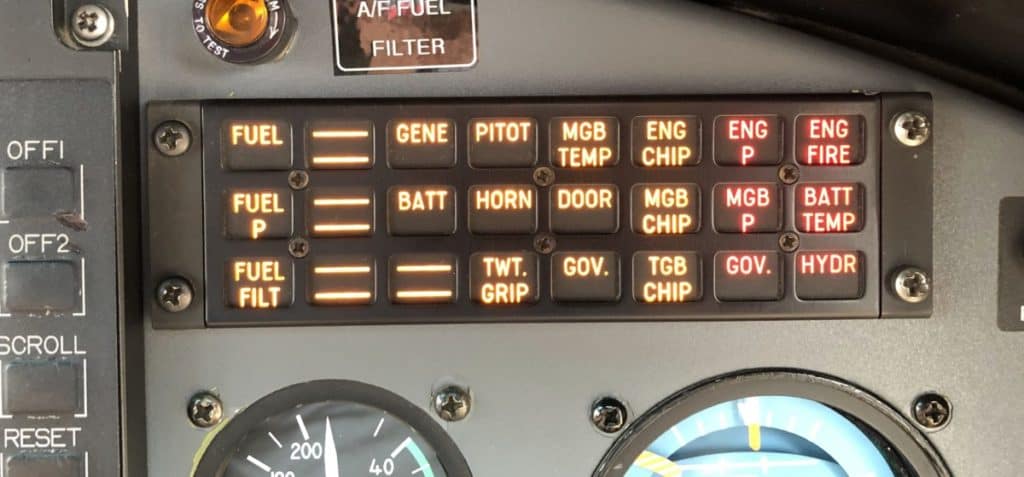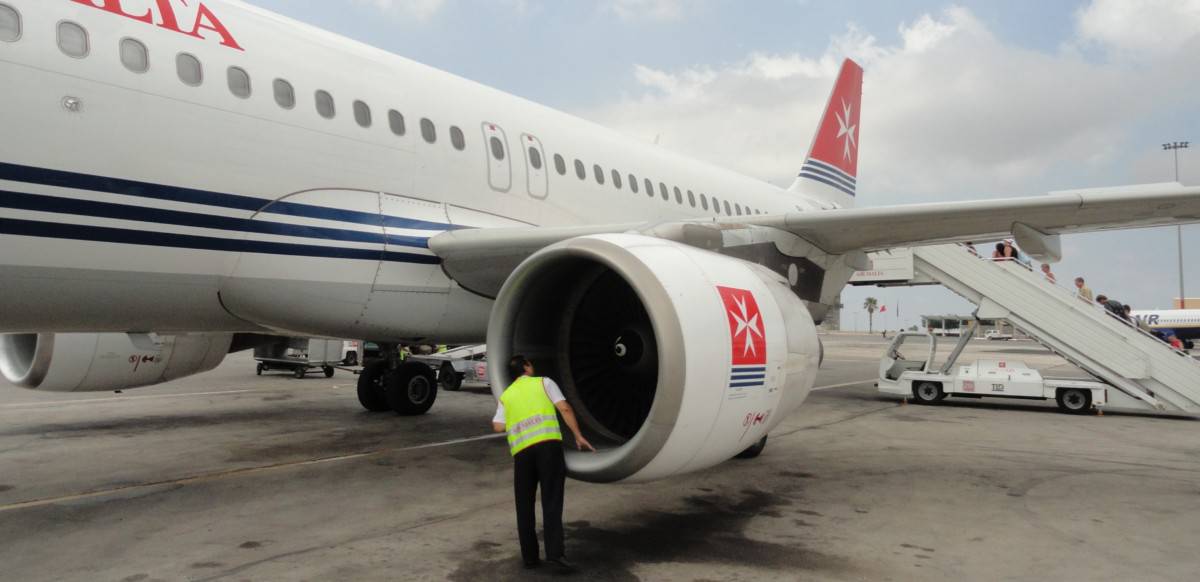
We have all been sitting by the window waiting to board our flight at some point and see a pilot walking around the aircraft looking at stuff, but what are they actually checking for? Then, as you board the plane both pilots seem to be doing things in the cockpit, what are they doing in there?
Before taking off in any aircraft, pilots have to ensure the aircraft has been released by the maintenance engineers, complete visual inspections of the aircraft, test emergency and safety systems, configure the GPS and instrumentation, check the weather, routing, and weight & balance.
No matter if the aircraft is a small Cessna, Helicopter, Corporate/Private Jet, or a Boeing 747, every pilot has to complete a series of actions to ensure the aircraft, crew, and cargo are all fit for flight.
Once a pilot is satisfied that everything required for the flight is as it should be only then will the flight commence. Read on to find out more detail about many of the things the pilots do before takeoff…
What Paperwork Do Pilots Check Before Takeoff?
Oh yes, the lovely paperwork! No matter what your job is there always seems to be an endless amount of paperwork, but luckily, many companies have now incorporated the documentation and paperwork into digital software making the task a little simpler.
As you can imagine there can be a lot of paperwork involved in aviation and each part plays a role in the safety net used to identify hazards or problems before they occur.
Aircraft Logbook
Every aircraft has a logbook. This is a mandatory book that documents every flight, the crew names, flight times, landings made, any additional information required by the company, and any maintenance issues that have previously occurred and have either been fixed or deferred while waiting on parts.
This is the pilot’s first check. If maintenance has not released the aircraft for flight, then a replacement aircraft needs to be used. Once the pilot signs the logbook for the day’s flight they have then taken responsibility for that particular aircraft.
This only works outside of the major airline world as a paper logbook would be impossible to track with the aircraft and would become lost, I guarantee it! To cover this, each airline carrier issues the same information but in a digital format called a Flight Release. This allows the pilot to check all the relevant information regarding the aircraft and sign for taking responsibility.
Maintenance Release
I want to expand a little more on the maintenance release as it can be quite a big issue if not inspected diligently. Whenever a pilot detects a problem with something on the aircraft they will fill out a section in the logbook, or company computer system detailing the issue. This allows the maintenance department to look into the fault and hopefully fix it right away, or they can defer the fault for a set period of time.
Depending on what the problem is, maintenance can defer items for 30, 60, or 90 days, or if it cannot be deferred, the aircraft is grounded until the issue is resolved. The maintenance manuals issued by the aircraft manufacturer will give guidance on the deferrals.

It is the pilot’s job to ensure the aircraft has not been grounded, the aircraft is still within the deferred time limit, and if the item has been deferred, its lack of function does not conflict with other items or systems on the aircraft.
Large, complex aircraft have an MEL (Minimum Equipment List). This lists the items which can be non-functioning for a flight, lists any conflicting items affected by the non-functioning part, and gives guidance on certain flight regimes that cannot be completed while the broken part is out of service.
This last part is of particular importance to the pilots because if they intend to use that part as part of their intended flight it could become a distraction in the cockpit wondering why its not working because they didn’t see the paperwork.
Company Memos
Many large aviation companies will issue memos throughout each month. Some of these memos can be additional inspections required by the manufacturer, changes to company operating procedures or policies, or even the results of incidents that the company may wish to bring awareness to for its pilots.
Most memos are there to help increase safety and are good to be read, however directions issued from the manufacturer that need mandatory compliance will need to be done by the pilots to ensure the aircraft is fit for flight. Flying an aircraft while not complying with a mandatory company memo could lead to disciplinary proceedings or worse!

Join My Newsletter & Get Great Tips, Information and Experiences To Help You Become a Superb Pilot!
Weather
Because aircraft fly in the same area as weather the pilots need to know about the weather for all phases of the intended flight. The weather at the time of takeoff, the weather en route, the weather at the destination, and the weather at any alternate landing destination must all be checked before and sometimes during the flight too.
Severe storms, reported turbulence, heavy icing, wind, cloud heights, and visibility are just some of the weather factors that need to be ascertained by the pilot before the flight commences.
Mother nature ALWAYS wins and as pilots, we have to respect her and if the weather during any part of the flight goes beyond personal and company limitations then alternate arrangements, routings or destinations may need to be changed or the flight postponed or canceled altogether.
NOTAMS
Notice To Airmen (NOTAMS) are issued by the FAA to alert pilots to information that could affect their flight. No matter how big or small the aircraft, NOTAMS applies to all pilots.
NOTAMS can be issued for things like runway closures, navigation equipment and airport lighting systems down for maintenance, a new crane on a building near an airport, blasting at a mine site, wildfire airspace closures, large firework displays, temporary airspace closures for when the President is in town etc.

Planning to arrive at an airport with only one runway that is closed for maintenance could be a bad scenario if low on fuel. This is why pilots should be checking the NOTAMS before every flight.
Flight Plan
This is just what it sounds like – It is a plan of the flight. These are completed by the pilots of smaller aircraft or by the dispatch department of large airlines.
They consist of the details of the flight – the departure and destination locations, the routing, altitudes, and headings to be flown, fuel onboard, names of the flight crew, number of passengers on board, any dangerous cargo on board, survival equipment on board, aircraft registration and coloration, etc
They can be as detailed or sparse as pilots wish but the main reason for a flight plan is that it needs to be filed with the FAA so that the flight can be placed into the system for its requested flight time slots, as these are limited, and the plan then activates search and rescue procedures if the aircraft fails to arrive at its destination.
Most aviation companies will track their own flight’s progress using satellite tracking systems but any flight leaving the country or wanting to enter military airspace will need to have filed a flight plan before the flight to avoid Uncle Sam’s fighter jets arriving on your wing!
What Do Pilots Check On An Aircraft Before Takeoff?
Once all the paperwork is in order, both the pilots and ATC know where they are going and all the aircraft and airspace is functioning correctly it is time to now go and get the aircraft ready.
Daily Inspection – DI
This is an inspection of the entire aircraft that is required every day before the aircraft flies. It is aimed more at small, private, or commercially operated aircraft rather than airlines.
This DI requires the pilot to walk around the aircraft and lift every cover panel to look for fluid leaks, broken hoses, burn marks, broken wires, fluid levels, structural cracks, bent parts, and holes in the fuselage – essentially anything that could compromise flight safety.
This visual inspection should be a good habit that pilots have, as many DI’s have caught an issue that would have been fatal if the aircraft took off. The DI is something I do on my helicopter before each flight of the day and it only takes about 30 minutes, but the peace of mind I have is complete.
Turnaround Check
This is the inspection that you will see pilots at the airport doing while wearing their Hi-Vis jackets.
The turnaround check is done by all pilots, myself included and it comprises a walk around the aircraft visually looking for anything that happened during the last flight that may need addressing before lifting off again.
This will be things like fluid leaks, low tire pressures, chafing wires or hoses, birdstrikes, and loose or open cowls. Basically anything obvious that can be seen by the pilot while walking around.
In my case, I load the passengers, close their door, ensure the ski basket contents are secure and closed and that every cargo door is closed and locked all while I walk the full aircraft back to my door. Then I get in.
You would be surprised how many backpacks or water bottles I have found left on the ski basket!

Aircraft & Avionics Setup
Depending on the aircraft, the amount of systems and things that need to be set up varies wildly! In a large commercial jet for instance the pilots will need to set up many items.
To do this they will run down their company checklist and complete each item before moving on to the next. This ensures no steps are missed and the aircraft gets configured correctly for the next stage of the flight.
Some of the items to prepare are:
- FMS – Flight Management System – This includes the departure procedures, routing, altitudes, weights, fuel loads.
- Radios – Required frequencies for Ground, Tower, and Departure controllers
- Performance – Knowing the performance data for the given atmospheric conditions, weights, and runway length is very important
- Electrical System
- Hydraulic Systems
- Fuel Systems
- Pressurization Systems
- HVAC Systems
- Lighting Systems
Once all the systems have been configured, some of them will need to have some tests run on them.
Safety System Checks
There are certain systems that have to be checked before the flight to ensure they are working correctly. If they fail the preflight test they could render the aircraft ‘Out Of Service’
These systems are usually very important with redundancies built-in and testing them ensures they will be ready to do their job correctly. Some of the typical systems that get tested will either have a built-in automatic test function or will require the pilot to do a series of actions.
Some of the systems to be tested can include:
- Screens – Making sure no color pixels are missing – Important for limitation markings on the data fields
- Warning Lights – Ensuring no bulbs or LED elements are not working
- Fire Systems – Ensuring the sensors, wiring, firing, and retardant systems are ready
- GPS – Ensuring GPS coverage for all phases of flight
- Hydraulics – Testing the valves, pumps, and pressures are working

Just like the systems to be set up above, the number of systems to be tested will vary. As you can imagine, the number of systems on a Cessna 172 will be negligible compared to the systems on a Boeing 787 Dreamliner!
To Finish
Once all the aircraft, systems, pilots, cargo, and passengers are ready can the request to taxi be made. The bigger the aircraft, the more there is to check but in essence, the backbone of the things that need to be read, tested, and configured remains pretty much constant for every pilot.
Every pilot needs to know the aircraft, weather, airspace, and passengers are good before take off as those pilots that cut corners on pre-flight preparation are the ones you end up reading about when something goes wrong.
Pre-flight routines are one of the most important aspects of any flight and when done with diligence and routine they make flights so much safer!
Header Image:
Source: Kristoferb
Further Reading
If you found this article interesting and would like to keep reading, I highly recommend the following articles from my blog:
- Aircraft Checklists: Why Do Pilots Use Them?
- How Do Pilots Know When To Takeoff?
- Aviation Weather Information: How do Pilots Get It?
- How Do Aircraft Avoid Each Other?
- Finding the Right Runway: How Do Pilots Know Where To Land?


